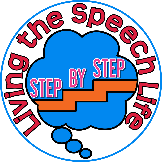IEP Goal Writing Made Easy
Another school year is looming and it’s fair to say that all of us school-based SLPs are facing it with a new normal and many unknowns. There is one thing we know for sure, though. We will be reviewing IEPs—present levels, goals and objectives, service times and locations. Some of these contain goals we wrote ourselves, others were written by other SLPs and school teams. Either way, it is up to each of us to implement those IEPs with fidelity, providing therapy and collecting data in order to demonstrate progress toward mastery of the goals.
I can picture it now, sitting in my quaint therapy room perusing IEP goals, my brow furrowed. What does this goal mean? How am I supposed to measure that? Are you kidding me? Ugh, do I have to amend this one too?
How many times have you asked yourself any of these questions?
Don’t you have enough to worry about without questioning previously written goals? Isn’t your time more valuable than the extra time you take contemplating the perfect goal?
Yes! And the solution is simple following the goal writing process below.
The first step should always begin with an individual’s specific strengths and weaknesses related to the classroom curriculum and learning standards. This helps narrow down the foundational speech-language skills that contribute to mastery of these standards.
Guess what? Chapters 1 and 2 of IEP Goal Writing for Speech-Language Pathologists: Utilizing State Standards, 2nd Edition breaks down these skills for you. In these chapters are Early Learning Standards (ELS) and Common Core State Standards (CCSS) and the accompanying speech-language skills necessary for success with the standards. If your system has adopted its own standards, you will find that they are very similar to the ELS and CCSS.
The next step is to determine which prerequisite speech-language skills the individual displays and lacks. Prerequisite skills are all the skills that lead up to the targeted skill: the building blocks. Every skill has several prerequisite skills; each prerequisite skill has prerequisite skills.
Once you’ve determined the missing prerequisite skills, you consider what the individual can reasonably achieve during the course of the IEP. These are the steps to mastery that become your IEP goals. Every prerequisite skill has several steps to mastery.
No need for you to stress over this step! Chapter 3 of IEP Goal Writing for Speech-Language Pathologists: Utilizing State Standards, 2nd Edition provides prerequisite skills and corresponding steps to mastery for a multitude of speech-language areas.
So now that you know the skill(s) and the achievable step(s) to mastery, you can turn that into the individual’s IEP goal(s).
Let’s consider an individual struggling with main idea. There are several steps to mastery for determining the main idea. We believe the student can achieve the step to mastery of “Identify __#__ details that support a given main idea in a _____(paragraph, story, poem, chapter, etc.).” We can then turn that step to mastery into the goal. Materials to be used are instructional-level paragraphs read orally to the student. We have determined that the mastery criteria will be 80% for 4 sessions.
So, what’s the goal?
The student will state 3 details that support a given main idea after an instructional-level paragraph has been read to him with 80% accuracy for 4 sessions.
Want more examples? Chapter 4 of IEP Goal Writing for Speech-Language Pathologists: Utilizing State Standards, 2nd Edition has examples, case studies, and so much more!
Save the school year stress for something other than goal writing!
Please follow us on Instagram @livingthespeechlife and feel free to contact us at livingthespeechlife@gmail.com
Lydia Kopel and Elissa Kilduff

